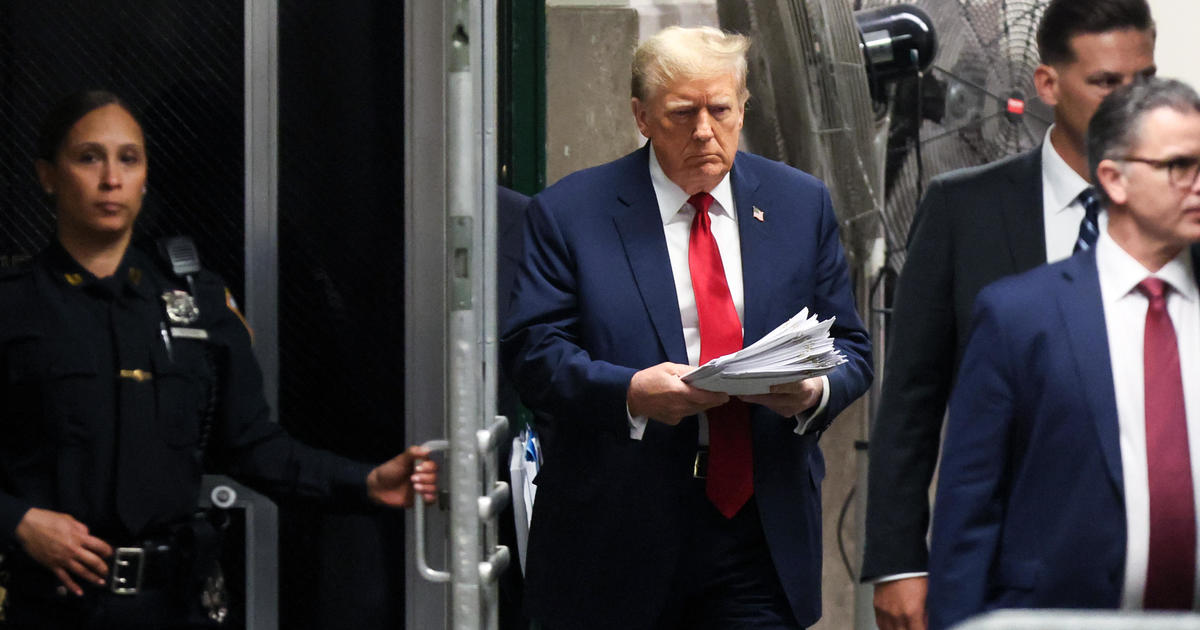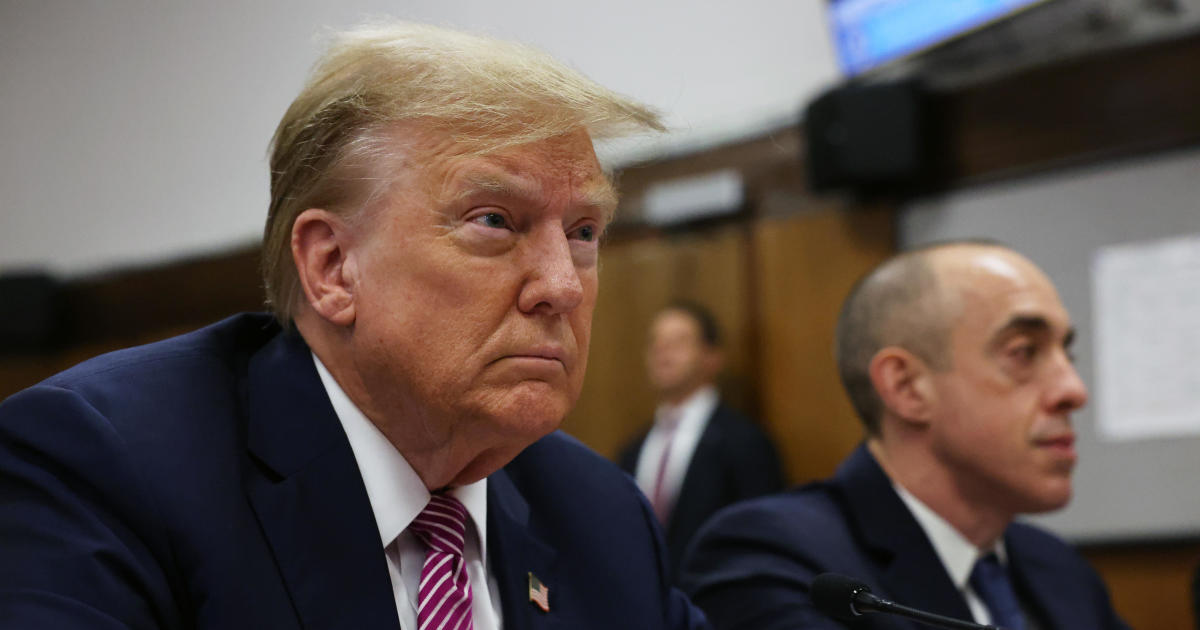CIA publishes new account describing "challenges" of briefing Trump
The U.S. intelligence community faced "greater challenges" in briefing former President Trump than it had confronted in almost five decades, when President-elect Nixon was taking office, according to a new account published by the CIA's internal research center.
As was well-documented during his time in office, Mr. Trump's tense relationship with U.S. intelligence agencies worsened amid politically charged investigations into his campaign's contacts with Russia, leading to a "badly strained" rapport early in his presidency, former CIA officer John Helgerson writes in an update to his book, "Getting to Know the President."
The book is featured among other unclassified materials on the CIA's "Center for the Study of Intelligence" website, but is for educational purposes and not an official product of the agency or reflective of its position, according to a disclaimer.
It was first published in 1996 and is a running historical account, dating back to the Truman administration, of how the intelligence community briefs newly elected presidents. Its latest chapter includes insights from the senior intelligence officials who oversaw the pre-election briefings offered to the presidential candidates in 2016, as well as briefings during the presidential transition and the delivery of the President's Daily Brief (PDB) throughout Trump's presidency.
"For the Intelligence Community, the Trump transition was far and away the most difficult in its historical experience with briefing new presidents," Helgerson says. "Trump was like Nixon, suspicious and insecure about the intelligence process, but unlike Nixon in the way he reacted. Rather than shut the [intelligence community] out, Trump engaged with it, but attacked it publicly," he writes.
The director of Central Intelligence during Nixon's presidency, Richard Helms, talked about the "rocky" relationship between Nixon and the intelligence community in a 1982 interview that is included in the book. Nixon "would constantly...pick on the [CIA] for not having properly judged what the Soviets were going to do with various kinds of weaponry. And obviously, he was being selective, but he would make nasty remarks about this and say this obviously had to be sharpened up."
Nixon mostly declined to receive the PDB, not because he wasn't engaged with foreign policy — he instead delegated this to his then-national security adviser Henry Kissinger. Throughout his presidency, according to the book, a courier would deliver the PDB to Kissinger's office. Kissinger would then send Nixon the PDB "along with material from the State Department, the White House Situation Room, the Joint Chiefs, and others," and then "Nixon would keep the material on his desk, reading it at his convenience throughout the day."
The latest installment of the book, a 40-page account, details Mr. Trump's first ever briefing, which took place in August 2016 at the FBI field office in New York City. Mr. Trump, then still the Republican presidential nominee, was "primarily a listener," the document says, "reflecting the fact that the material was new to him." At his second briefing in September, Mr. Trump asked "numerous questions," many of which "reflected his interest in financial and trade matters and in press reports about Russia's reported interference in the U.S. election campaign," the account says.
The briefings during the transition were led by a group of 14 intelligence officials hand-picked by Ted Gistaro, a veteran CIA analyst who later served as former President Trump's briefer. They hailed from the CIA, FBI, State Department and other agencies, and were the "largest and most organizationally diverse group of experts ever deployed for transition briefings," according to the document.
Overall, Mr. Trump's briefings began with a delay, because his team "was not fully prepared to launch transition operations, apparently having not expected to win the election," Helgerson writes.
And while the earliest sessions were substantive, they could also be meandering, according to former Director of National Intelligence Jim Clapper, who said Mr. Trump "was prone to fly off on tangents; there might be eight or nine minutes of real intelligence in an hour's discussion."
Mr. Trump's already charged relationship with the intelligence community took a turn for the worse after he was briefed on the contents of a dossier - whose most salacious claims have since been discredited - that was compiled by former British intelligence officer Christopher Steele. Despite efforts by Clapper to explain that the intelligence community had not relied on the dossier to arrive at its assessments of Russia's 2016 election interference – and had not leaked the document to the media – Trump remained unpersuaded and embittered.
"Gistaro recalled that when they met for their next PDB briefing session, Trump 'vented for 10 minutes about how we [the IC] were out to destroy him.' Gistaro did not believe that Trump ever accepted subsequent IC disavowals of responsibility for the dossier," Helgerson writes, using an abbreviation for "intelligence community."
Still, Clapper also said that Mr. Trump, despite more negative public bluster, sometimes complimented the intelligence community, praising and expressing gratitude for the work of his briefers. The book notes that he was particularly appreciative of the CIA's material on foreign leaders with whom he was dealing in the early weeks of his time in office.
Overall, Helgerson writes that behind closed doors, Mr. Trump's interactions with intelligence officials were more amicable than was apparent on Twitter, where the president often expressed frustration with what he called a "Deep State" seeking to undermine his presidency.
"Even during times when President Trump publicly expressed great irritation with the IC—most notably in 2019 when an [intelligence community] employee filed a whistle-blower complaint concerning the president's efforts to have Ukraine investigate a political opponent, Joe Biden—briefings continued as usual and Trump's demeanor during the sessions remained the same," Helgerson notes.
Mr. Trump's briefings were most frequent at the beginning of his administration; they averaged 2.5 sessions a week and lasted between 40-60 minutes, but tapered off over time. In what marked a break from recent convention, Trump was not briefed on covert action programs for the first several weeks of his administration, though other members of his administration, including CIA Director nominee Mike Pompeo, were.
Mr. Trump's intelligence briefers customized his PDB to his preferred format and consumption habits, as is traditionally done for incoming presidents.
"On most days, Trump's PDB comprised three one-page items describing new developments abroad, plus brief updates of ongoing crises in the Middle East," the account says. "The goal was to make the PDB shorter and tighter, with declarative sentences and no feature-length pieces."
Though the PDB was published every day, Mr. Trump only received an oral briefing two to three times a week, when "he relied on the briefer to orally summarize the significance of the most important issues," the account states.
"A few subjects and areas of the world were notable by their relative absence. Regarding Europe, only NATO budget issues, Turkey, and approaching elections in France and Germany stimulated much discussion. Latin America, Africa, and Southeast Asia received almost no attention," Helgerson writes.
Of Mr. Trump's approach to the PDB, Gistaro, his first briefer, said, "He touched it. He doesn't really read anything." Gistaro's successor, Beth Sanner, adopted a "story-telling" approach to the briefings that included a one-page outline and a set of graphics, Helgerson recounts.
Sanner also led Mr. Trump's last briefing before he left for Mar-a-Lago for the holidays in 2020. He received no briefings in the final month of his presidency, and notably none following the January 6 attack on the Capitol.
"Trump had his own way of receiving intelligence information—and a uniquely rough way of dealing publicly with the IC—but it was a system in which he digested the key points offered by the briefers, asked questions, engaged in discussion, made his own priority interests known, and used the information as a basis for discussions with his policy advisers," Helgerson observes, adding, "The system worked, but it struggled."
Editor's note: An earlier version of this article misidentified former CIA officer John Helgerson as Robert Helgerson. The story has been updated.



